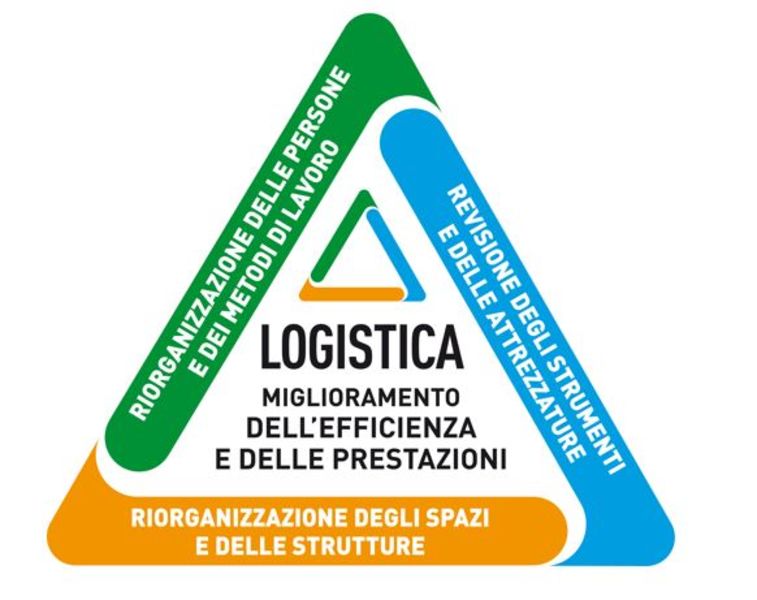Let’s try to understand what corporate logistics is and how to make it more efficient in order to maximize service for internal clients (production departments, warehouses, etc.) and external clients (customers and suppliers) in terms of speed, quality and customization. This article introduces the corporate logistics function, while, in the following articles, we will deal with topics such as warehouse logistics and distribution logistics. People working daily in corporate logistics know the importance of governing the logistics regarding physical flows of goods and the accompanying data flows, both inside and outside the company, as well as worrying about stocks management.
Services provided by the logistics function are based on a complex system which rests on two basic pillars, one structural and the other organizational.
The structural component refers to the set of spaces, structures, equipment and tools necessary both for conserving and physically managing products (warehouse, storage systems, forklifts, automations, means of transport, etc.) and for managing the accompanying data (hardware & software systems, etc.).
On the other hand, the organizational component refers to all the methods and practices put into place to manage human resources, materials and service providers, as well as all of the components which make up the structural pillar.
A high-performance logistics system consists of an organic and balanced mix of these two aspects. Significant investments in the structural part alone cannot guarantee an improvement in the whole system: everything depends on their integration with the organizational system. In the same way, a good organization may not be enough to make up for an inadequate or obsolete infrastructure.
Recently, logistics management has undergone a strong push to change in order to adapt to new market contexts (globalization, digital transformation) and to recent developments in production systems. On the one hand, customers require increasingly high levels of service (frequent deliveries, small batches, reduced lead times, customizations) and, on the other hand, companies need to reduce management costs and increase internal efficiency.

Company logistics can act on the following levers:
- Reorganization of spaces and structures (warehouses)
- Review and upgrade of tools and equipment
- Reorganization of people / service providers and working methods
In the next articles we will describe the methods adopted from time to time in companies in order to obtain a balanced and well-performing logistics system, with the aim of sharing the experience we have built up in logistics consulting projects.
Riproduzione riservata©




